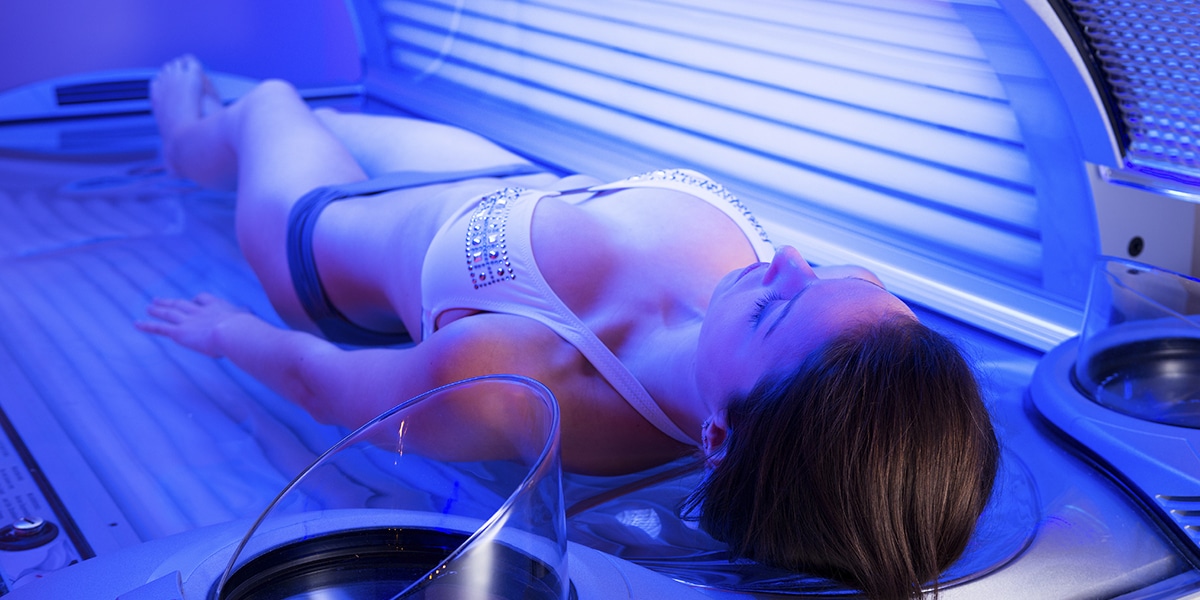Whether you’re after a “summer glow” or looking to add some color to your complexion in the depths of winter, tanning beds may seem like a good option – if you haven’t done your research, that is. Tanning beds were relatively popular up until the late 2000s, when the the International Agency for Research on Cancer (IARC) upgraded the classification of tanning beds from Group 2A (probably carcinogenic to humans) to Group 1 (carcinogenic to humans). This is enough to make most of us steer clear of tanning salons, but if you travel a few blocks, you’re likely to encounter one. If tanning salons are so dangerous, what’s keeping them in business? And, not to mention, legal?
First, it’s important to understand how tanning beds work relative to the sun. The sun emits two types of ultraviolet (UV) radiation that are concerning to us. UVA rays penetrate deeply into our many layers of skin, and are known to cause signs of premature aging. UVB rays don’t penetrate as deeply as UVA rays, and are responsible for sunburn. Unlike the sun, tanning beds emit primarily UVA rays.¹
Some individuals mistakenly turn to tanning beds as a source of vitamin D. In order for vitamin D synthesis to take place, our skin needs to be exposed to UVB rays. Since tanning beds emit primarily UVA radiation, they are not a source of vitamin D.¹Many tanning salons advocate for the use of tanning beds to achieve a base tan before a sunny vacation to prevent sunburn. While a suntan does offer some protection against sunburn, tanned skin is damaged skin. When exposed to UV radiation, skin cells accumulate the skin pigment, melanin, as a part of a self-defense mechanism.² However, if you’ve read our previous post, you’ll know that melanin accumulation is indicative of skin cell DNA damage, which may lead to skin cancer if not repaired by our bodies’ DNA repair mechanisms. Regularly applying sunscreen is a much safer and more effective way to avoid sunburn while on vacation.
While the FDA has banned individuals under the age of 18 from using tanning beds, there is still reason for concern;³ using a tanning bed before the age of 35 increases the risk of developing melanoma by 75%.² If you care about your long-term health, avoid tanning beds. Sunless tanning products are a much safer way to achieve tanned skin. However, it’s important to remember that not all sunless tanning products offer sun protection, nor do they offer a protective base tan.
To avoid a sunburn, use Sun Index. Available for iOS and Android, the free app lets you know how much sunscreen to apply. It also lets you know for how long you can stay outside with or without sun protection to let your body produce vitamin D naturally.Sources:
- Sarnoff, D. S. (2011). Can a tanning bed safely provide me with the vitamin D I need? Retrieved June 30, 2017
- U.S. Food & Drug Administration. (2015). Indoor Tanning: The Risks of Ultraviolet Rays. Retrieved June 30, 2017
- U.S. Food & Drug Administration. (2016). FDA Proposes New Safety Measures for Indoor Tanning Devices: The Facts. Retrieved June 30,
- 2017



